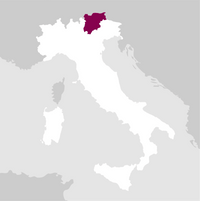Details

Perfume

Color

Taste
Serve at:
10 - 12 °C.
Longevity:
03 - 05 years

Pairings
- Start up year: 1975
- Oenologist: Mario Pojer
- Bottles produced: 250.000
- Hectares: 33
Faedo 1998: We are already starting to show our thirst for innovation: we are among the first at a national level to market Chardonnay, which until then was practically unknown.
Faedo 2002: We patent the reduction and press vinification with nitrogen recovery, which drastically reduces the use of sulphites. We then begin to wash the grapes through the grape jacuzzi.
The arrival of Marianna, Matteo, Fiamma, Elisa and Federico has brought further life and energy to this dream in which passion and innovation are the keystone.
Faedo 2013: The Zero Infinito project is born: Zero chemical treatments in the countryside, Zero sulphur dioxide, Zero commercial yeasts, Zero clarifying agents, Zero filtrations, Zero antioxidants. Read more


| Name | Pojer e Sandri Nosiola 2024 |
|---|---|
| Type | White green still |
| Denomination | Vigneti delle Dolomiti IGT |
| Vintage | 2024 |
| Size | 0,75 l |
| Alcohol content | 12.0% by volume |
| Grape varieties | 100% Nosiola |
| Country | Italy |
| Region | Trentino Alto Adige |
| Vendor | Pojer e Sandri |
| Story | The origin of the name, Nosiola, is not certain, it could refer to the finish of the wine with a bitter taste, which recalls the hazelnut or amber color of ripe berries. |
| Origin | Cadastral municipality of Faedo in the Coveli Erti area, Pra Grand area |
| Climate | Cadastral municipality of Faedo in the Coveli Erti: 300 m. a.s.l., with South - West exposure; Pra Grand area: 550 m. a.s.l.. with Westerly exposure. |
| Soil composition | Faedo is located between the Permian formation of the porphyritic platform (volcanic rock) and the Werfenian deposits of sandstones, siltstones, limestone marls and dolomite. The soil is variable in depth from 30 to 100 cm, it is of the siltycalcareous type and rests on a marly conglomerate. |
| Cultivation system | "Pergoletta trentina aperta", Guyot. |
| Plants per hectare | 6200-6500 |
| Yield per hectare | 110 q. |
| Wine making | The white vinification method involves washing the grapes and pressing in a controlled atmosphere. Both techniques have been developed in the company pursuing the aim to avoid the use of exogenous antioxidants and to preserve the varietal characteristics of the grape itself (aromas and antioxidants). |
| Allergens | Contains sulphites |




